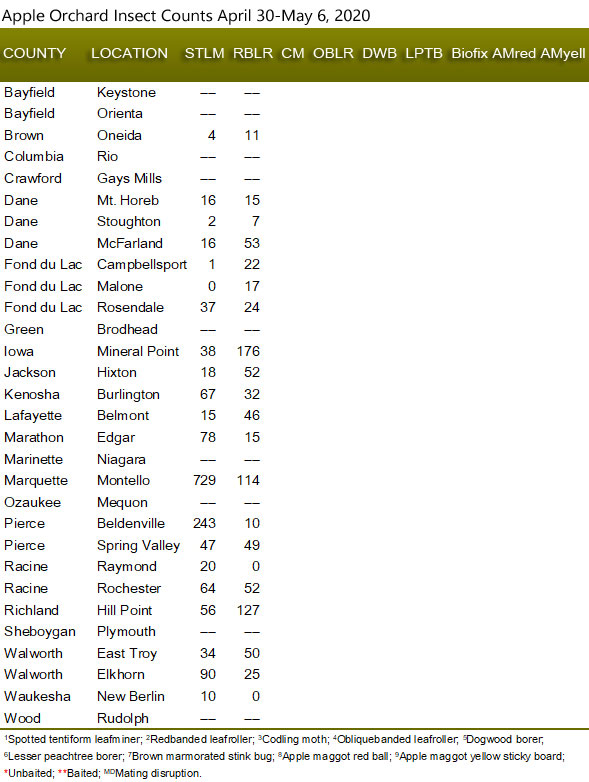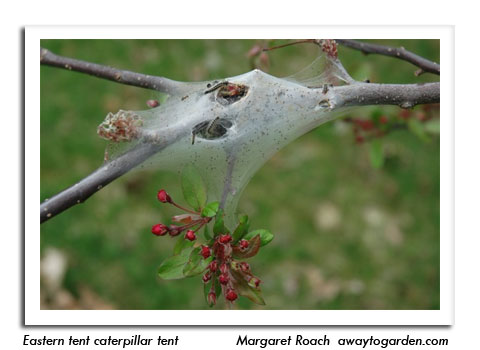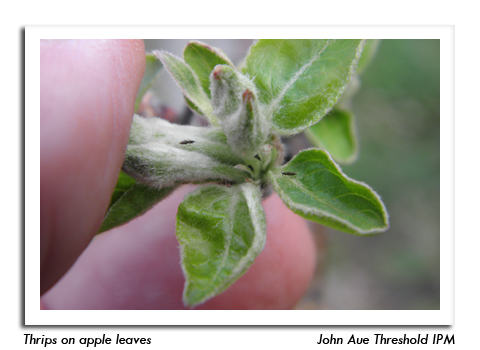
 |
|
|
Fruits
Volume 65 Number 2 Date 05/07/2020 FROST-FREEZE THREAT - Frost and freeze conditions forecast for May 7-9 are expected to damage unprotected fruit crops and other sensitive vegetation. If winds are light and insufficient for air mixing to prevent an inversion freeze, running frost fans in orchards may be necessary to prevent damage to apple trees at pink or bloom. Orchards at pink are at a greater risk of crop injury whereas those still at tight cluster should fare better. Critical temperatures for fruit damage to trees at tight cluster are 27°F for a 10% bud kill, and 21°F for a 90% bud kill. If bud growth has reached pink, 28°F will result in a 10% kill and 24°F will result in a 90% kill (information provided by the IPM Institute of North America and UW-Madison). A recent Michigan State University article outlines strategies for protecting fruit crops: https://www.canr.msu.edu/news/what-can-fruit-growers-do-if-a-freeze-is-coming. EASTERN TENT CATERPILLAR - Egg hatch began around mid-April and small webbed tents are becoming noticeable on apple, ornamental crabapple and wild cherry trees. Removal of the small tents by hand or with a tool during the next 2-3 weeks is the suggested control. Insecticide use for tent caterpillars is not advised. REDBANDED LEAFROLLER - Moth emergence accelerated from April 30-May 6, with counts ranging from 0-127 RBLR per trap and averaging 44 per trap. The average last week was 27 per trap. Peak flight activity, and corresponding high trap counts, should occur soon in the southern half of the state. The first RBLR caterpillars generally appear around petal fall. GREEN FRUITWORM - Apple growers planning to apply a Bt product (i.e., Agree, Deliver, Dipel) for control of green fruitworm or other leaf-feeding caterpillars are reminded that most formulations persist on foliage for only a few days following application. Because Bt must be ingested by larvae, it is imperative to confirm the presence of caterpillars through scouting terminals and blossoms and treat only if temperatures are warm enough for their activity. If blossoms are still closed, a Bt application will not reach larvae that have tunneled into the blossoms. Spring lepidopteran populations in orchards are still very low at this time. THRIPS - Apple orchards with a history of thrips damage should be checked in the week ahead for early signs of activity. The recommended scouting procedure is to examine buds on several different varieties in multiple locations, including the perimeter. A count of three or more thrips per fruit bud is considered an economic population that can cause abnormal leaf formation, leaf tatter, flower injury and reduced fruit set. SPOTTED TENTIFORM LEAFMINER - The apple orchard monitoring location in Marquette County reported a high capture of 729 moths per trap for the week, while counts at other sites were markedly lower at 0-243 per trap. Spring moth emergence is expected to peak by the third week of May across much of southern and central Wisconsin. -- Krista Hamilton, DATCP Entomologist 



|
|
|